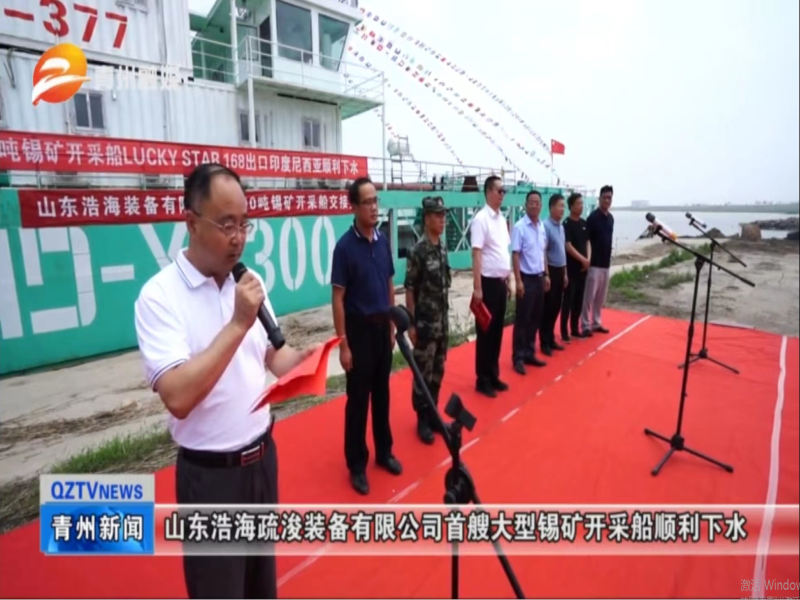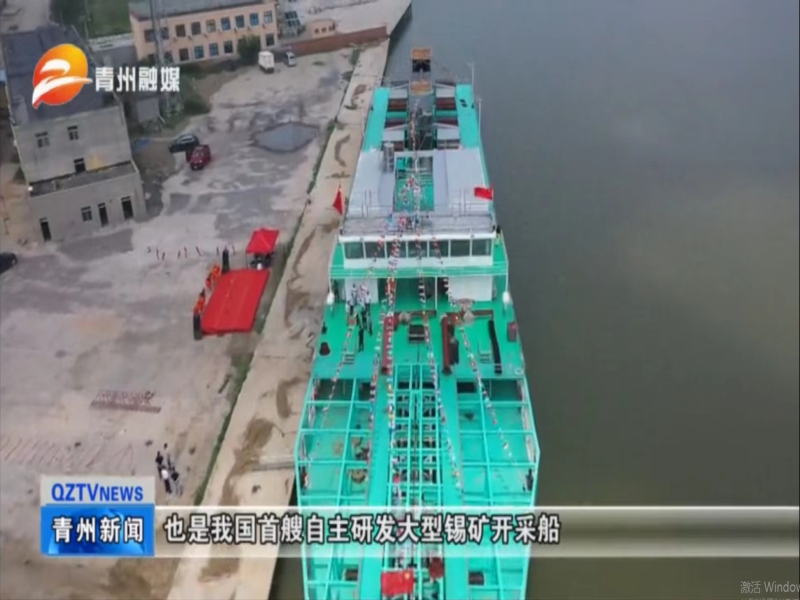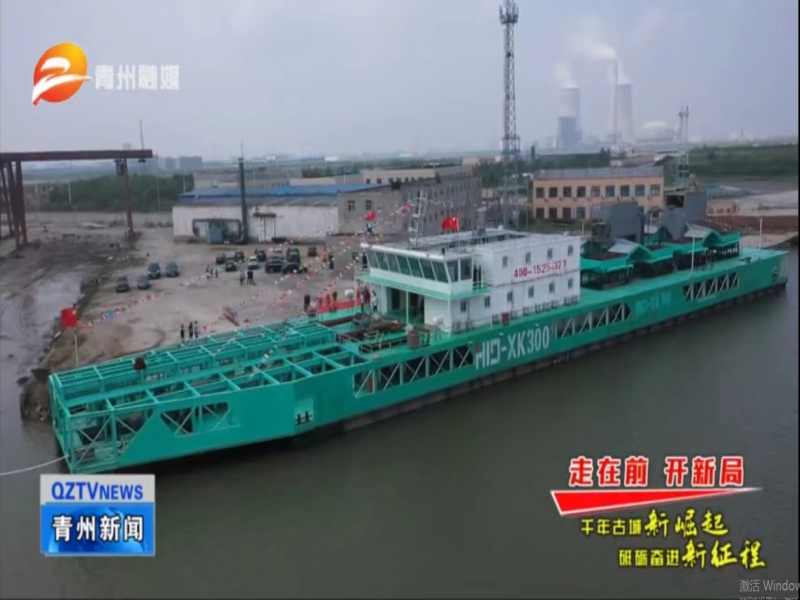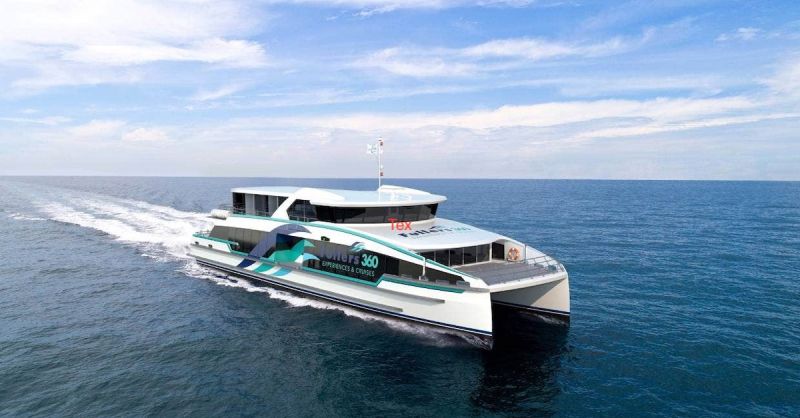China first large capacity tio ore minerals mining dredger is independently developed and manufactured by HID, was delivered to the Indonesia client last week.
Leaders of Qingzhou City and China Dredging Industry Association were invited to attend the handover ceremony.

The huge and excellent tin ore mining equipment is high-end customize for tin ore mining in the sea. It’s efficiency production tin ore extraction and selection all in one machine.
Total length 95 meters, 17.5 meters width, 2.8 meters depth, dredging depth reach 50m (underwater),
self working weight 1300 tons, handing capacity 700T/H, total installed power is 2800kw.

The sea mining vessel integrates advanced technologies in the field of dredging engineering and mineral processing.
It has a compact structure, complete functions, a high degree of automation, strong data acquisition capabilities, high reliability and good maneuverability. It can choose different submarine geological conditions and mineral types. Mining and beneficiation system; according to different characteristics of tailings, different forms of tailings discharge are adopted to avoid environmental pollution; a stable whole ship platform is equipped to implement detection and control of mining and beneficiation vessel operations with refined control and management systems.

This dredger is the crystallization of the hard work of HID people who are proficient in research and development and have the courage to innovate. Which has changed the long-term dependence of domestic large-scale tin ore mining equipment on foreign imports and filled the gap in domestic related industries. We are all proud of it.
Source: https://www.maritimeeconomy.com/post-details.php?post_id=Z25rag==&post_name=China%20First%20Large%20Sea%20Tin%20Ore%20Mining%20Vessel%20Manufactured%20by%20HID%20Delivery&segment_name=4



 Source: https://www.maritimeeconomy.com/post-details.php?post_id=Z25qbA==&post_name=Reach%20Subsea%20ASA%20Subsea%20vessel%20Deep%20Cygnus%20secured%20for%2041%20years&segment_name=16
Source: https://www.maritimeeconomy.com/post-details.php?post_id=Z25qbA==&post_name=Reach%20Subsea%20ASA%20Subsea%20vessel%20Deep%20Cygnus%20secured%20for%2041%20years&segment_name=16 Source: https://www.maritimeeconomy.com/post-details.php?post_id=Z25raA==&post_name=HamiltonJet%20has%20%20have%20signed%20an%20agreement%20with%20Auckland%20Transport%20for%20the%20delivery%20of%20the%20first%20of%20five%20hybridelectric%20propulsion%20systems.%20&segment_name=30
Source: https://www.maritimeeconomy.com/post-details.php?post_id=Z25raA==&post_name=HamiltonJet%20has%20%20have%20signed%20an%20agreement%20with%20Auckland%20Transport%20for%20the%20delivery%20of%20the%20first%20of%20five%20hybridelectric%20propulsion%20systems.%20&segment_name=30




